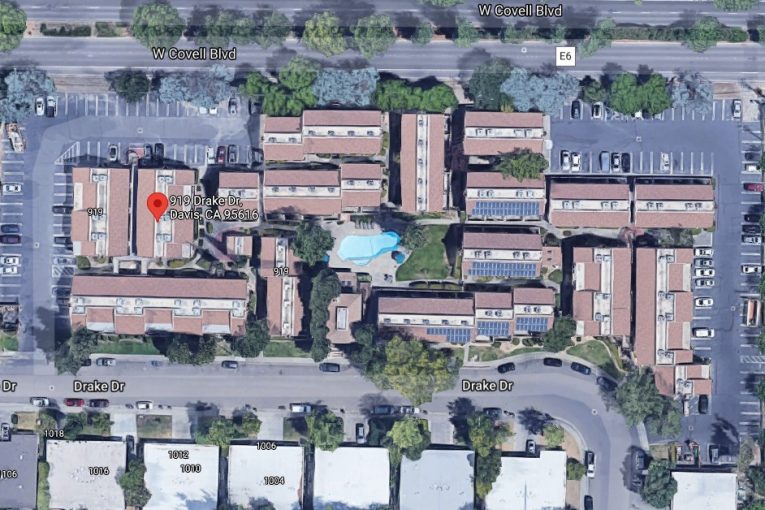
By Alan Hirsch
Low-income people live in apartment complexes that are typically surrounded by parking lots. Typically, to gain approval, a landscaper plan encompasses a tree planting plan and a de facto commitment to maintain the tree into perpetuity. However, the city has a policy to not see if a tree is maintained as agreed upon. In fact, while the developer is required to plan enough tree cover to provide 50 percent shade for parking lots, in 15 years this is not enforced at all. The city draft of a new Tree Ordinance seems to have been written with no discussion about how to bring apartment and shopping center complexes back into compliance with  city law … and their own promises.
city law … and their own promises.
Most code compliance by the city is driven by citizen complaints. However, the city has a policy not to release to the public the developer tree planting promises (Landscape Plans). The city claims its hands are tied by privacy issues but has not explored how they can avoid its using the “fair use doctrine” or the State Health and Safety Code. This means is it is hard for citizens to take action. This is another problem not remedied under the city’s proposed ordinance.
Below are some pictures showing mobile homes and apartment complexes, good and bad and power of public regulation to improve quality of life of lower income residents of Davis who typically don’t own the land there so that they can plant a shade tree.
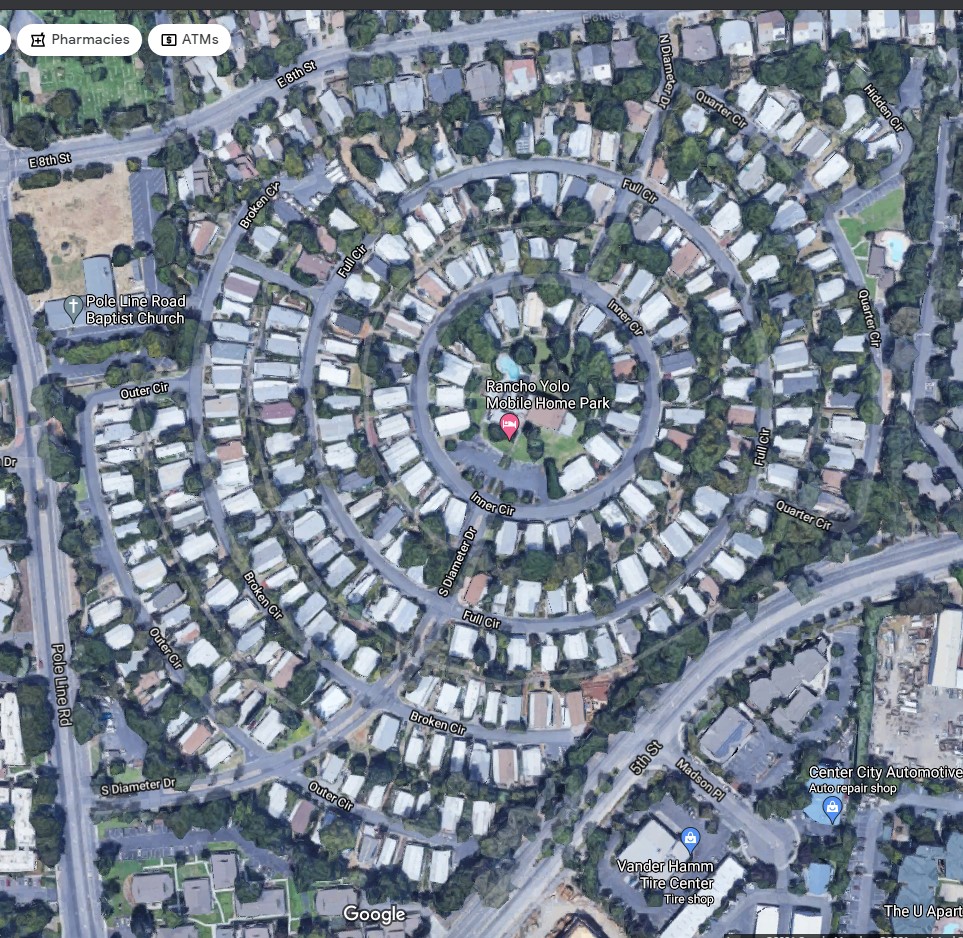
Contrast tree shade with these two photos of mobile home parks. It is striking. Rancho Yolo (Pole Line and 5th) and Death Valley xeriscape of Davis Creek Park off Research Park in south Davis.
Rancho Yolo is in the city with some regulation, as trees had to be planted initially to get approval. Dave Creek Mobile Park (in south Davis off Research Park Dr,) is in the county, not city, with weak or no tree regulation. I would not call Rancho Yolo heavily treed—but, wow!
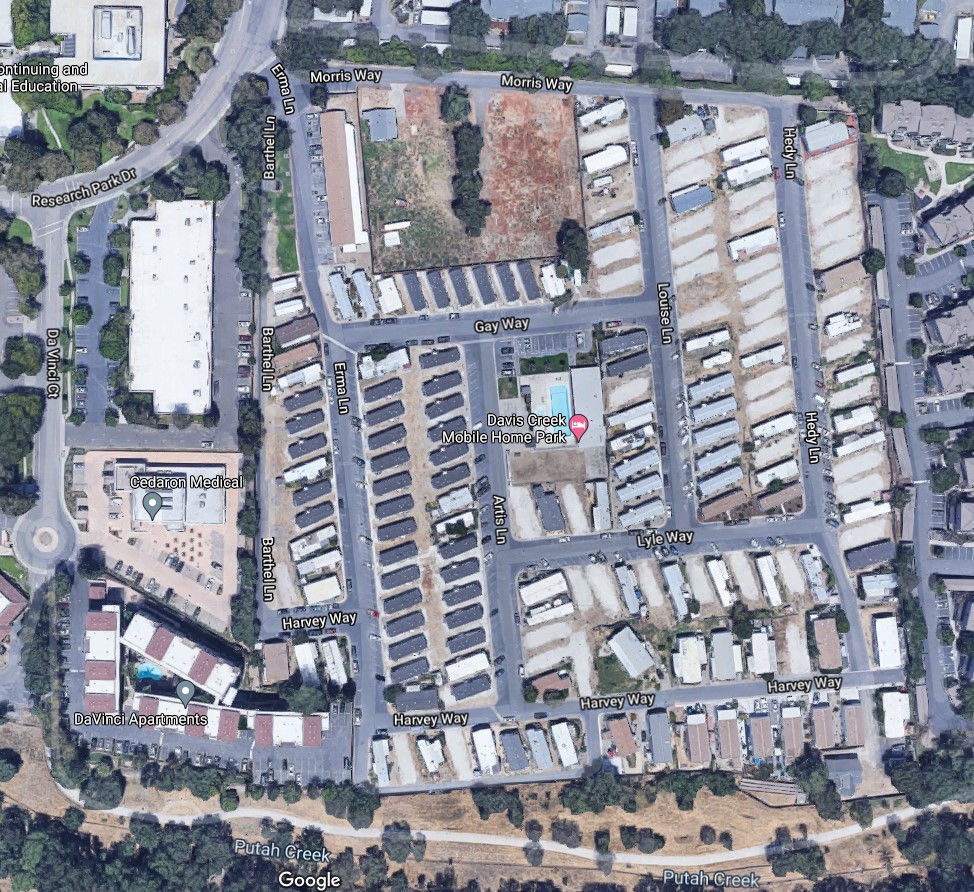
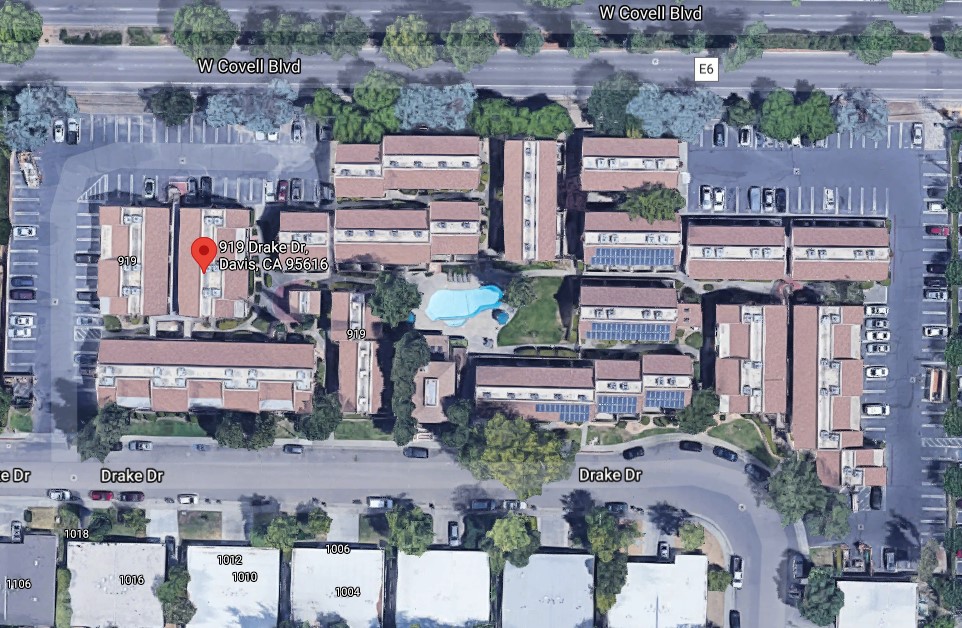
Parking lot asphalt gets heated to 140-150 degrees in the summer, so imagine living in a building on a hot plate. The next aerial shows the unshaded parking lot at Drake Apts. (fronting on both W. Covell & Drake between Anderson and Sycamore as comparisons). The city has a regulation requiring 50 percent shade of all parking lot surface for over 40 years, but it is not enforced and there is not plan in the new tree ordinance for any retroactive enforcement or application to shade to older parking lots.
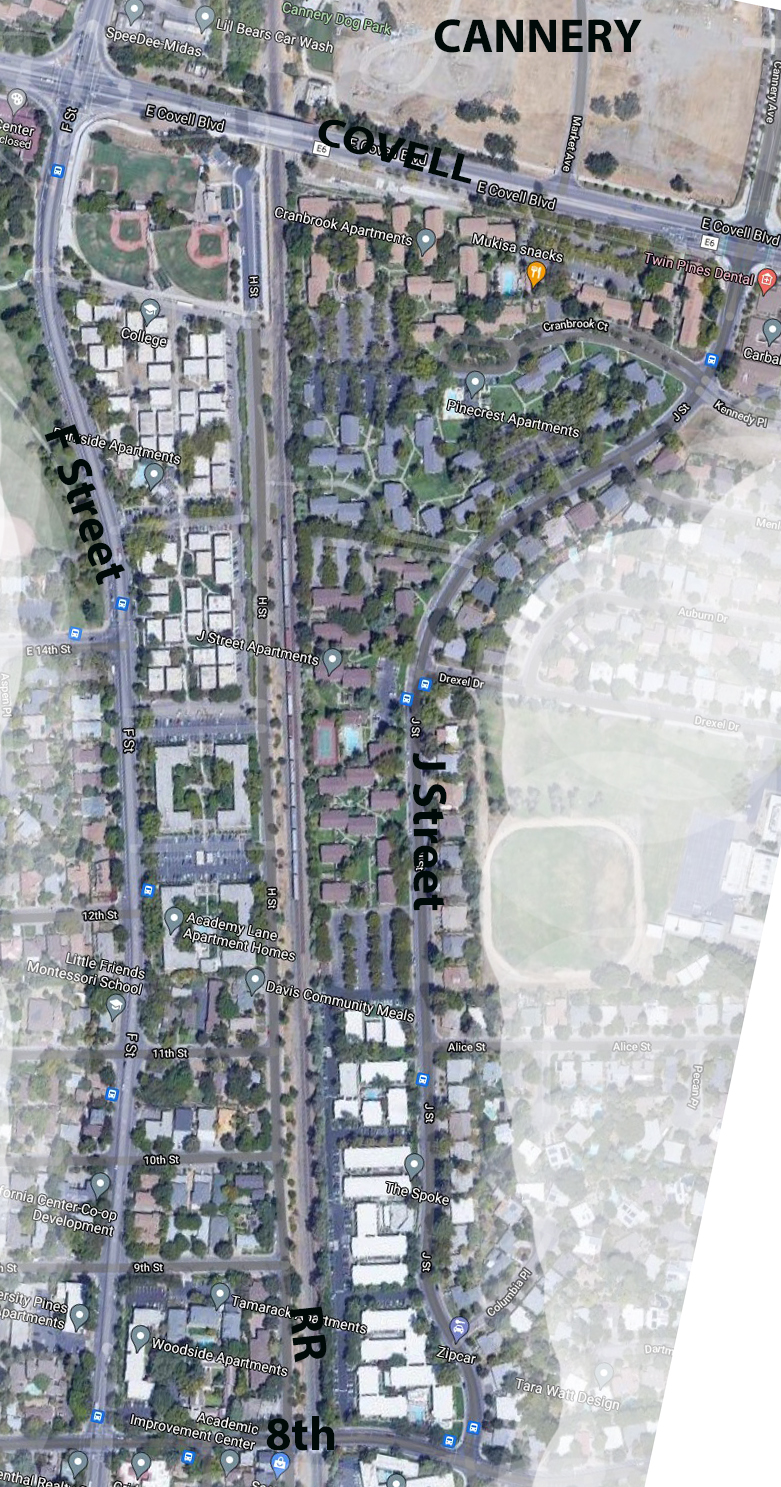
Then there is the aerial is of multiple apartment complexes on the strip of land that parallels the Cal Northern RR between F and J Streets. This is between 8th St & Covell.
Note on on this picture:
- A) the great variation in Tree Canopy on parking lots showing trees are possible. Kudos to local landlord Tandem Properties for doing a good job!
- B) on Tandem and others, not the lack of street and open space between buildings. If our regulation only focuses on trees in parking lots we are missing something. Tandem Apartments have shade in “machine spaces” (parking lot) but also in the green spaces where people live and can hang out, i.e. by their front doors.
Support our work – to become a sustaining at $5 – $10- $25 per month hit the link:




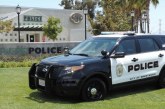

Give me a freaking break!
All due to ignorant ‘environmentalists’ who came up with the “tree shading” requirements in the tree ordinance related to commercial and MF projects!
Requires 50% shading of parking areas, etc… ‘cool concept’… then the community, including the landscape architects, developers, City staff, general public thought that could be accomplished by ‘projecting’ what the tree canopy would be, if you planted trees in parking areas… with no sense [read, “nonsense”] of how trees grow and thrive… look how it was commonly accepted [foolishly] as to implementation…
For most tree species (our street tree is a London Plane [aka ‘Sycamore’]) the canopy pretty much matches the extent of the root system, and the root system needs water and air to develop… so, in parking areas (and street medians, ‘landscape strips’ behind the curbs), the soil is compacted around the plantings (so much for air and water), and the plantings are done within a 48″ dia. space… surrounded by impervious [air and water]… yeah, like that’s going to be effective to produce the assumed 20 foot diameter ‘canopy’… [Don Shor, please feel free to chime in!]
Some City staff leaders, like Bob Cordrey (Parks, and an arborist) pointed this out, but the “planners”, electeds, etc. ignored this…
Kudos to Alan H for pointing out that some developers/owners have tried to mitigate the foolishness [and kudos to them]…
The main problem has been that the “do-gooders” had no clue what it would take, scientifically/botanically to achieve 50% shading… and didn’t really care, as they had done their part in making it a “requirement”… a big, hypocritical/hypothetical stupid.
More recently, pervious pavement, larger spaces for tree planting, better initial maintenance, on-going efforts for maintenance have been done, but only seldom…
This has VERY little to do about “renters” per se… has a lot to do with general stupidity…
A much better plan for parking lots is to cover them with solar panels.
Good answer! More honest and effective than the current ordinances, practices…
Shades the pavement, folk using the parking lots, produces energy…
Only one problem emerging… there is a bill in the CA legislature to not let owners ‘sell back’ electricity to the grid… ironically, sponsored/introduced by a San Diego legislator… dis-incentives for installing panels, windfall for the utilities… AB 1139… so far seems to affect residential, but something about a camel’s nose in the tent…
For a parking lot like the one at Nugget on Covell I’m sure the energy generated would mostly go to offset the energy used in the shopping center.
On another note. When I drive down Russell, its sad to see the housing that was built on research fields because the people of Davis couldn’t be bothered with more housing being built on commodity production land. It is even more infuriating to see that parking lots were built on those research fields. To see land where research was done to help feed the world now covered by solar panels over pavement seems the ultimate in short sightedness.
Um… seems Ron G, you are conflating research field with commodity production land… if I am incorrect, feel free to correct me…
Ironically, got to meet an elderly gentleman who lived on the north side of Russell, just west of California [many years ago]… we got talking, at length… he had lived there since the late 40’s… I mentioned that I had lived in Hughes Hall (Becket, Titus and Struve were all built ~ 1954 [not, long gone]… my birth year… he told me that the land had been an experimental orchard before then… the University (probably, at that time while what is now UCD, was a ‘farm extension’ of UC Berkeley… might have happened sooner), invited neighbors to ‘glean’ the orchards’ produce… so they would not have to dispose of the fruit 9organic waste)… that gentleman was ‘for reals’…
So, the conversion of UCD land to housing, rings shallow… de minimus as to “feeding the world”… by old law, UCD had to destroy/waste the products of their ag research acres… in Enology/Viticulture, they had to dump all the wine, not used for educational purposes (taste-testing) they were not to be a “competitor” as to ‘farmers’… if you fly over CA, UCD property is less the eye of a gnat, compared to Blue Whale…
A few years ago, UCD either got permission, or flaunted the old laws, and to reduce net costs of the olive trees along Russell (clean-up of fruit, washing down the bikepath due to ‘slickness’ of the olives dropped on the path, and attendant liability), actually harvested them, made several grades of olive oil, bottled it and sold it @ UC outlets… it’s pretty damn good, by the way… priced between “off the shelf” and “connoisseur” rates…
— Benefits of trees:
Cool local surfaces
Reduce urban heat island effect
Reduce wind locally
Trap and remove pollution and fine particles from the air
Provide habitat and nesting sites for wildlife
Provide food for pollinators and beneficial insects
Reduce energy usage by cooling the air
Increase property values, appreciate over time
Sequester carbon
Have psychological benefits
Aesthetic values: beauty, leaf and bark textures, seasonal flowers, fall color.
— Solar panels:
Ugly, reflect heat, provide no habitat or food sources, depreciate over time.
But they do produce electricity.
I would never trade my shade trees for solar panels. The ascent of solar and its associated mandatory use in construction is going to lead to ugly, hot, unlivable neighborhoods and bleak, arid shopping centers.
Solar panels belong on the tops of buildings. They don’t belong anywhere you can plant and maintain a tree.